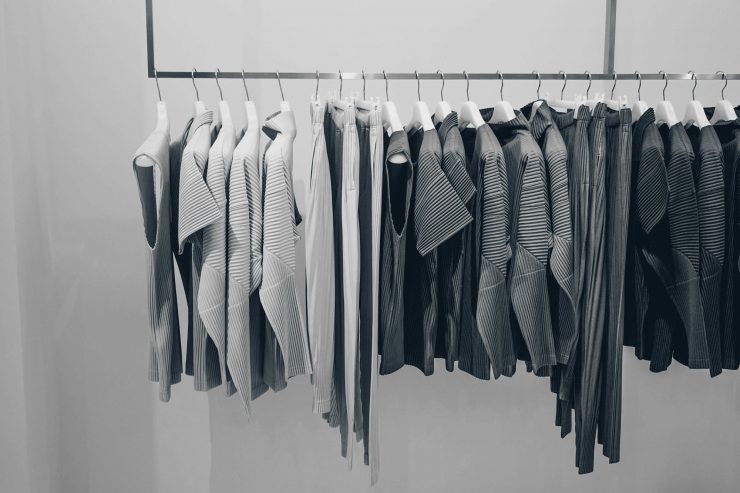The fashion industry is a multibillion dollar system that guides consumers, and realistically everyone, into what a person should look like in every situation, under any circumstance. Within the vast world of fashion is the fast fashion; the purpose of the fast fashion is to get designs from the runways and into the stores as fast as possible, changing collections and selling new products every week. Sounds great, right? Well, it is not that simple.
As most industries, fashion is like an iceberg; we can only see the tip, reflected in store windows and magazines. The fashion industry is, in fact, the second most contaminant industry, having carbon emissions, chemical waste, and water contamination in almost every step of the production process. The mass production of fast fashion has led to the decrease of environmental regulations and the unstoppable exploitation of low-cost producers and forced labor.
Even though we are all guilty of promoting the growth of the fast fashion retailers such as H&M and Zara (I know, that shirt was just too cute not to buy it), there are a lot of disadvantages of such an accelerated production, but there are also ways in which fashion manufacturers and retailers can turn the disadvantages into advantages.
Cotton is not as innocent as they want us to think
The cotton is a crop that drinks more water than any other crop in the world. It is also the most chemically dependent crop, consuming 10% of all agricultural chemicals and 25% of insecticides. Although some high-end brands have promoted the organic cotton, which is much more sustainable and less impactful for the water reserves, its cultivation is expensive and rejected by most popular brands.
What can be done by manufacturers?
Why not consider recycled cotton? Its natural origin allows for recycling processes that would provide material for new products without actually cultivating the plant itself. As an easy way of acquiring clothes that could be recycled, special discounts could be offered to consumers that, instead of disposing clothes that they no longer wear, hand them to the manufacturers or retailers to be recycled. It’s important to know that recycled cotton doesn’t possess the same quality as the cultivated one, but fast fashion is not meant to offer high quality anyway, right?
The dye is the reason why ecosystems die
The dying process can be made in different stages of a garment. That means that it can either be done to the fibers, the fabric, or to the complete garment. The process also produces unthinkable amounts of chemical waste. And where does that waste end up, you ask? The answer is the rivers, the ocean, and ultimately, our skin. One of the chemicals liberated by the process is nonylphenol, which is not only toxic to the human skin, causing burns when having direct contact, but even worse, is completely fatal for marine life. In addition, some of the waste includes lead, mercury, and arsenic among other toxins.
For an interesting read click here.
What can be done by manufacturers?
With the newly found interest for low-intensity colors in the fast fashion industry, natural ways of dying are suddenly a viable option if mixed with synthetic materials too. Most clothes that are part of the fast fashion market are not meant to be worn for a long time, meaning that the natural pigments will last as much as the garment itself. Some of the options available for the dying process are as basic and common as fruit and leaves; carrots for orange colors, berries for pink colors, beets for intense red, spinach for green, among many other alternatives that provide natural pigments (and come on! That’s the original way of dying fabrics and materials!). The materials for the dye process require land and resources therefore the solution, in my opinion, lies in a hybrid system between natural dye and synthetic dye.
Your clothes have traveled more than you
As a way to reduce costs, attires are no longer manufactured locally, but outsourced to countries in which labor regulations are not as strict (we’ve all heard about sweatshops). The only reason why we can buy clothes at the prices we all love is by overlooking some flaws in the process. This means the exploitation of children, dangerous working and living condition for the workers and extremely low wages. In addition, the clothes have to be transported and delivered to us somehow, consuming tons of fuel and therefore producing the respective amount of air pollutants.
What can be done by manufacturers?
I realize that by asking manufacturers to produce locally, I would also be asking them to increase costs dramatically and potentially lose sales. But just think about it for a second… Local production can also mean higher quality, which translates into higher prices that are actually accepted by the consumers that look for higher quality garments. I know that most manufacturers won’t even consider this option, but just know that the possibility exists.
Clothes made from plastic
There are two words that can cause disgust in the high-end fashion world; polyester and acrylic. These two manmade materials are produced with polymers that are, by nature, non-biodegradable and unsustainable. The process of production is also quite pollutive and, although the material can be recycled, it is hard to eliminate. For that reason, thousands of artificial, resistant fibers are found in water bodies around the world each year.
What can be done by manufacturers?
Keep using plastic! Just use the right kind of plastic. The Adidas Parley project launched a pair of sneakers using recycled ocean plastic as a main component, and guess what…the market loved them! Plastic is everywhere which means that maybe there is no need to produce more of it for garment production; it is just a matter of reusing the one that already exists, leveraging on the fact that it is non biodegradable, therefore, the construction of the material will keep being stable for many, many years.
Now that the truth is out about what happens during the process of clothing production, looking for alternatives and eco-friendly processes should become a collective effort. Not only should consumers now analyze if a purchase is worth it, but manufacturers should get more involved in the details of the process, and how those could be replaced for cleaner ones. Let’s take into consideration that to achieve a change in the way clothes are produced, manufacturers and consumers need to work together by producing and buying differently, and now, we know how. So what do you think? Can manufacturers change the way the fashion industry is seen? (Let me know what you think in the comment section). For me, fashion is not just actualizing my wardrobe every week, anymore, just as for many retailers is just not about mindless production but quality assurance…I guess it’s up to you.







As a fashion insider, I’m so happy that this topic is spreading more and more. I get incredibly frustrated when people are choosing to remain ignorant just for the sake of buying new clothes. Fashion is not food! it Doesn’t just go away once we consume it. We have to be aware of the impact it has on the planet and on the people that make it for us!
http://d-l-za.com/2017/05/18/fast-fashion-and-sustainability/